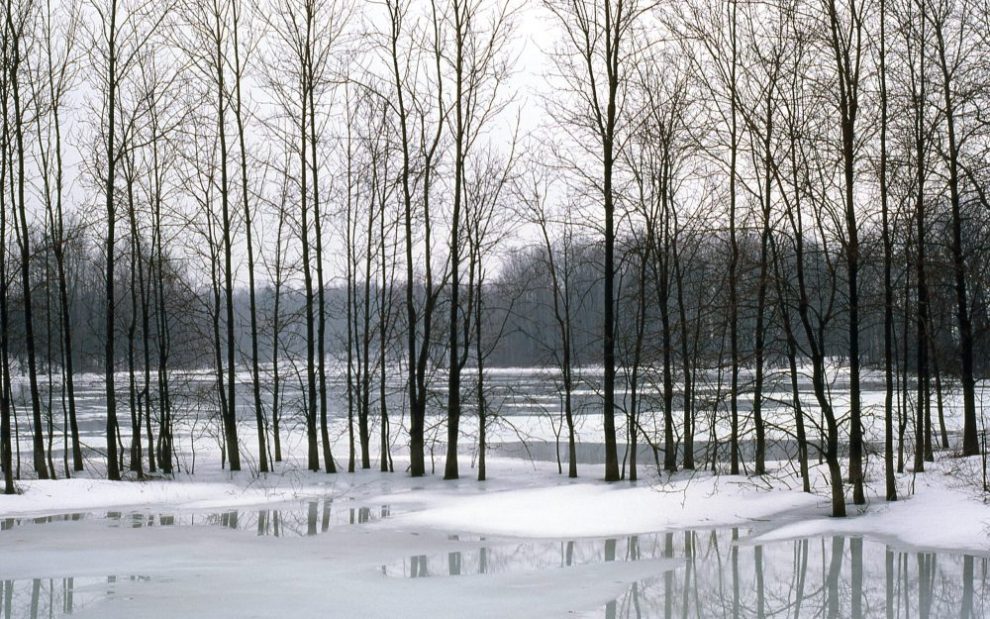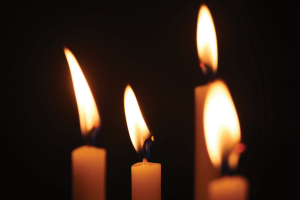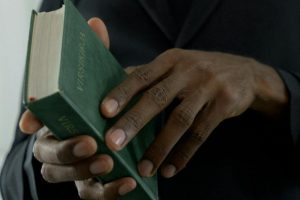February is a gray and gloomy time in Western New York, the area of the country where I’ve found my home. The Christmas lights and decorations have come down. The streets are lined with sad, dirty piles of half-melted snow and ice. The snow cover is sparse enough to uncover a season’s worth of formerly hidden dog poop, lonely single gloves separated from their mates, and other assorted garbage. And while the days are getting longer, a truly sunny day this time of year is a rarity, and it feels like an eternity since we’ve seen a blue sky or stars at night. Every evening when I pick up my toddler from daycare, he tilts his head up and stares at the sky. “Moon hiding,” he says sadly, an implicit “again?” in his voice.
This year, Ash Wednesday falls right in the middle of what I sometimes feel is the ugliest month of the year. “Remember that you are dust and to dust you shall return” seems a fitting sentiment when surrounded by gray dirt and old snow. And the barrenness of outside makes this seem an appropriate time to mourn and repent for all that separates us from God.
And yet, I’ve never found Ash Wednesday services to be desolate or depressing. There is something comforting in anointing myself with a similar dirt to that covering the roads and lawns this time of year. It is a reminder that we humans don’t stand apart from nature—that we are all connected through the dust, the dirt, even through death.
Even if February is barren and gray, it gives way to spring—one of the most beautiful seasons in my part of the country. Daffodils, tulips, and crocuses will push their way out of the soil. Snow piles will give way to thousands of lilac bushes. The flowering crab apple tree in my front yard will burst forth with an extravagant show of bright pink flowers. The blue skies will return.
In today’s world it is easy to forget that we humans are part of this same cycle, not apart from it. Everything about how our world is structured—how we buy food, how we transport ourselves, how we consume goods, the lifestyles we consider necessary—serves to separate us from the Earth and, therefore, from God. On Ash Wednesday, we have the opportunity to recall the integral relationship between God, humanity, and the rest of creation and repent for what keeps us from living this out the rest of the year.
In a Glad You Asked article for U.S. Catholic about the origins of Ash Wednesday, theologian David Pitt writes that the feast asks us to confront “two fundamental issues: who we really are and where, with God’s help, we are ultimately going.” Part of the answer to these questions is that we are earthly creatures, created from the same dust that forms the universe—from the stars to the food we eat to the purring cat sitting next to me as I type these words. Another partial answer is that eventually we will join the rest of creation—both through union in God’s endless love in heaven and also physically as our bodies decompose and support the next round of the circle of life.
I’ve decided that this Lent I’m not going to give up cookies or take up journaling. Instead, my Lenten practice will be to better understand what it means to be a creature of the earth. I’ll focus on living out my baptism, both in water into a community of faith and in ash into the community of creation. Perhaps I’ll spend time preparing a garden bed. Or walking in the forest. Or just spend time staring at the moon. Whatever ways make sense for you, I hope you too find a way to remember that all of creation is made of the same dust.
This article also appears in the February 2024 issue of U.S. Catholic (Vol. 89, No. 2, page 9). Click here to subscribe to the magazine.
Image: Unsplash/Michael Hamments















Add comment